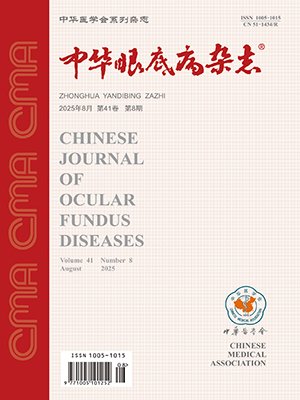Objective By using a newly developed animal model of limited macular translocation (LMT) in rabbit eyes, to explore the complications,indications and predictability of LMT. Methods LMT models were performed in 15 rabbit eyes, and were divided into 4.5 mm group and 3.5 mm group by the length of scleral shortening.The effect of retinal translocation (distance and direction) and its complications were analyzed. In a separated group, postoperative corneal astigmatism was studied after release of scleral shortening suture 1 month after LMT. In order to study the impact of neuroretina-retinal pigment epithelium (RPE) adhesion on LMT, retinas and choroids in 4 pigmented rabbit eyes were pretreated with photocoagulation. Results Success rate of LMT was 86.7%. In these cases, retinal translocations were achieved[(distance of 610 to 2690 μm, [AKx-]±s=(1395±636)μm; translocation angle α of 10-38°, [AKx-]±s=(22.7±8.3) °]. The difference in scleral shortening between 4.5 mm and 3.5 mm groups did not significantly influence the final translocation. Major complications of LMT included intraocular bleeding, retinal break, and corneal astigmatism. Release of scleral shortening suture reduced corneal astigmatism and made it more regular, meanwhile, retinal translocation did not regress. The neuroretina-RPE adhesion induced by retinal photocoagulation made neuroretinal hydrodissection difficult, and led to retinal break readily. Conclusion Sufficient LMT models in rabbit eye were obtained with few postoperative complications. Direction of retinal translocation is an important factor influencing the effect of LMT, except for distance. Release of scleral shortening suture can effectively reduce corneal astigmatism without causing regression of retinal translocation. For the patients with a history of macular or para-macular photocoagulation, LMT should be performed carefully. (Chin J Ocul Fundus Dis, 2002, 18: 203-207)
Citation: ZHANG Yi,YE Junjie,LUO Yan,et al. Experimental study of limited macular translocation. Chinese Journal of Ocular Fundus Diseases, 2002, 18(3): 203-207. doi: Copy
Copyright © the editorial department of Chinese Journal of Ocular Fundus Diseases of West China Medical Publisher. All rights reserved




